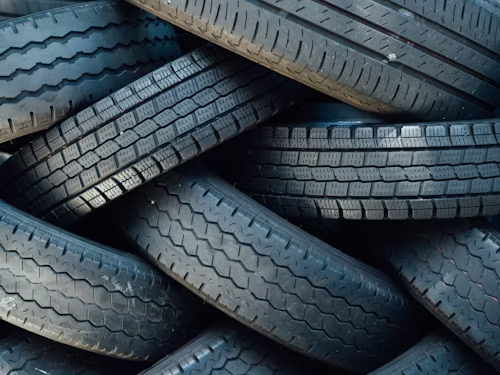Tread Innovation: Eco-Friendly Advancements in Tyre Design
 (Photo: Unsplash)
(Photo: Unsplash)
Eco-consciousness is everywhere these days. Regardless of the industry, everyone wants to see a sustainable stamp of approval on the products they buy. This is no less true for the tyres you buy. Thanks to an increase in public awareness campaigns and efforts made on the part of manufacturers and other green groups, it is becoming increasingly important that the cars they choose live up to global environmental standards. So if you are looking for BMW jobs in Birmingham or simply to buy a car, there are certain features that you should look for.
Let’s check out what this means in closer detail. In the sections below, we will describe the benefits of choosing eco-friendly tyres over traditional ones. We will also look at the components of these tyres, and also examine their drawbacks.
What are the advantages of eco-friendly tyres?
As the world attempts to hold manufacturers accountable to environmental production standards, ESG specialists are creating ratings systems for every kind of product that can possibly harm the environment in its production. This also applies to tyres.
The EU, for example, rates tyres on a scale ranging from “A” (very eco-friendly) to “G” (not eco-friendly). Different countries have different ratings systems, and international organizations are working to coordinate these systems to that the world can take a more unified approach to their production.
Benefits of eco-friendly tyres include the following:
- They have a lower “rolling resistance.” Rolling resistance is a measure of the amount of energy that is lost as wheels turn. If rolling resistance is lower, that means there is less fuel lost. Eco-friendly tyres have the advantage of both having higher rolling resistance, as well as being lighter than traditional tyres. They tend to have better grip on the road.
- Eco-friendly tyres are made of eco-friendly materials and therefore contribute less to pollution in their production. We will discuss this further below.
- Eco-friendly tyres are more durable, and therefore will last longer than traditional tyres. This obviously means that they need to be replaced less often.
- Eco-friendly tyres tend to be involved in fewer accidents. Their superior grip on the road means that drivers have a greater degree of control and therefore get in fewer accidents.
- Less noise. Another advantage of eco-friendly tyres is that they cause less noise than traditional tyres. Because they shed less of their exteriors when in motion, it takes them longer to become bald and therefore they provide a quieter ride to drivers and others on the road.
What are eco-friendly tyres made of?
Eco-friendly tyres utilize a high degree of natural rubber. Traditional tyres use synthetic rubber, which is non-biodegradable and harmful for the environment. Due to global concerns about the supply of natural rubber running out, environmentalists are making a concerted effort to become more actively involved in rubber tree agriculture, and also in maintaining the supply chain of everyone involved in natural rubber production.
In addition to natural rubber, eco-friendly tyres also utilize other materials. Organic cotton, for example, is also used in certain amounts. Eco-friendly tyres also use renewable products such as recycled steel, recycled rubber chemicals, and synthetic rubber that is made from sustainable materials such as recycled plastic bottles.
Are there drawbacks to the use of eco-friendly tyres?
As with most things that are eco-friendly these days, there are some drawbacks to the production and use of eco-friendly tyres. The most significant is that they tend to be more expensive than traditional tyres. If they were cheap and plentiful, of course, then everyone would probably rush out and buy them without hesitation. But because of their comparative rarity and the costs involved in obtaining the necessary materials, they still tend to be more expensive than their traditional counterparts. This will hopefully change with time, but for the moment it remains the case.
Eco-firendly tyres can also be harder to find than traditional tyres. Again, this is a result of their comparative newness and the fact that demand hasn’t yet reached the point where they are widely available in many areas. This too should change with time, though.
The future looks brighter
In order for sustainable cars, tyres, and other things we use on a daily basis to become more widely available, there needs to be a synthesized and concerted effort on the parts of everyone involved in their production and usage: farmers, auto manufacturers, shippers, consumers, etc. And governments need to do their part with creating and enforcing regulations that will govern all these efforts. It will certainly take time, but eventually we should get to the point where we see more sustainable products in society, and less of the ones that are causing us to go backwards.

 Automechanika Birmingham
Automechanika Birmingham


Comments